Proto Tamansari is a research project, dedicated to develop alternative planning tools for the urbanization of Indonesian Desakota areas.
Desakota’s are areas in the extended surroundings of large cities, where urban and agricultural forms of land use coexist and are intensively intermingled. Many Indonesian cities suffer from issues caused by the vast urbanization of these areas, reflecting the shortcomings of regular planning tools to cope with this particular context. Proto Tamansari aims to develop appropriate planning instruments for the development of these areas. Several themes are investigated by different teams, to capitalize the current conditions as a base for new developments. Felixx covers the theme ‘resilient agriculture’, in collaboration with Wageningen University.
The proposed strategies aim to offer farmers an alternative for the urbanization of their land, by improving the economic, social and ecological feasibility of agriculture. They steer clearly off from the creation of radical new foodscapes, but use the existing landscape as a base for agricultural innovation. The existing sawa-system is turned into a farming-smart-grid, integrating strategies on three levels: production, processing and trade.
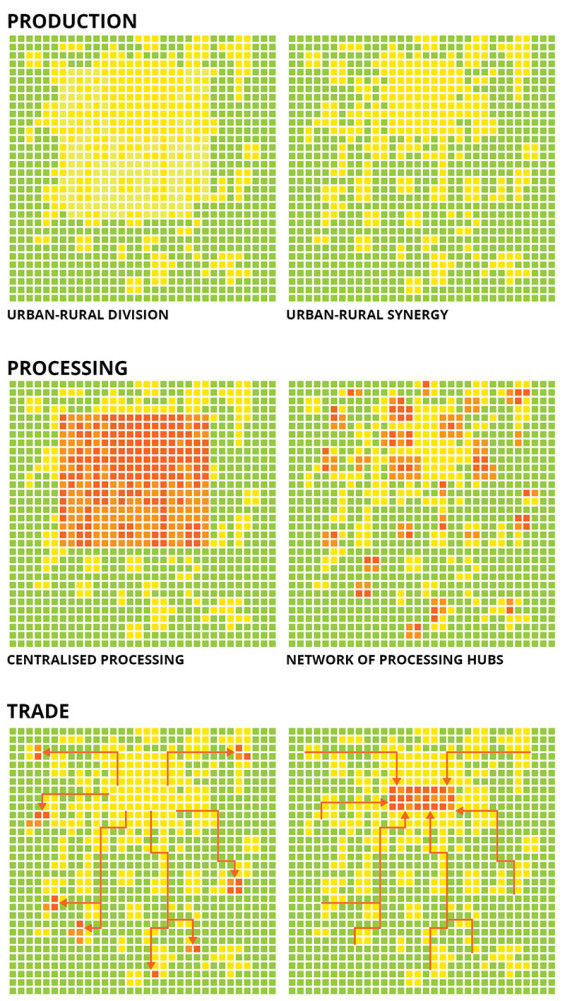
Production
Agro-ecological farming methods are applied to intensify the production. Not by specialization on certain cultivations, but by diversification. This diversification is not reached by upscaling the plots and farms, but by stacking different cultivations on top of each other within the existing landscape. Rice, fish and ducks can be combined on one plot, even raising their individual yield. The same counts for combinations of eatable trees and shrubs. This allows farmers to address different markets, and improve the ecological biodiversity.

Processing
To increase the profit for the farmers, reduce logistics and strengthen closed nutrient cycles, a network of processing hubs is proposed. Small plants are located in the villages, and bigger ones along main infrastructure lines. As such they offer a base for a new hierarchy between different villages. Some will develop into bigger industrial zones, others will remain more artisanal. Further specialization of different types of processing per village could even generate deviating identity carriers.

Trade
Transformations of the trade system will finally determine the role and meaning of the agricultural areas within the urban region. Villages could either be connected to central trade centers in the city, making the desakota areas the production grounds for the city. But small scale trade centers could also be located within the villages, turning the desakota into a supermarket park of the city.
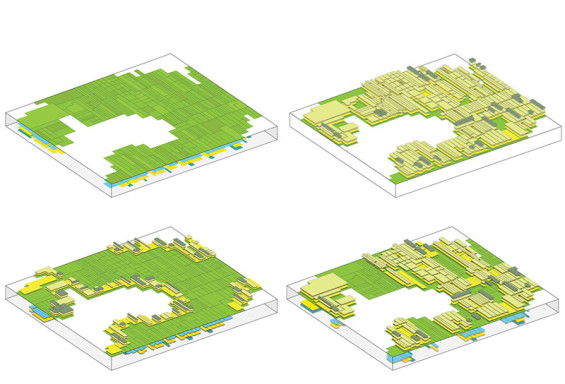
Besides agriculture, strategies were proposed for other themes such as water, infrastructure, and economy. All strategies were presented and discussed during a workshop in Indonesia, combining local and international knowledge, connecting scientific and design-driven expertise. As a result of this workshop, different strategies are combined into development frameworks for a number of pilot projects in Yogyakarta and Bantul. These pilots will be used as showcases for other desakota areas in Indonesia and elsewhere.
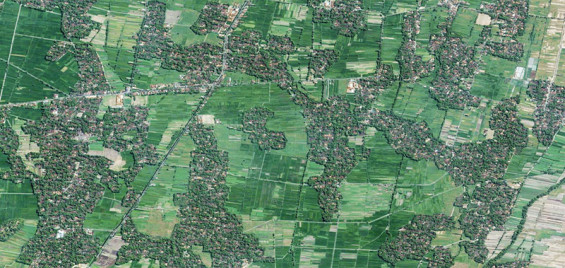
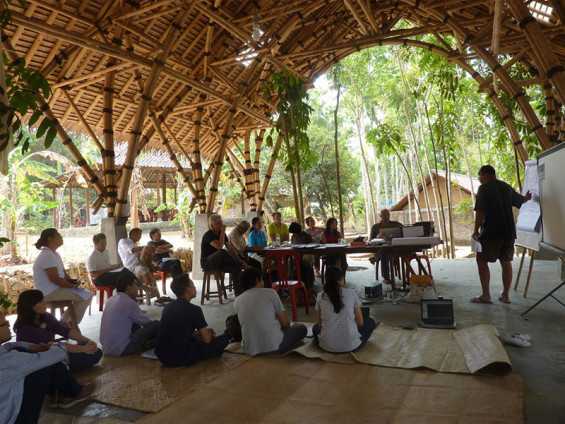
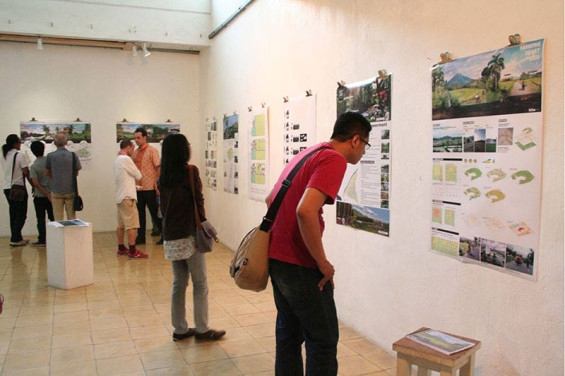
The core team consisting of Indonesian and Dutch architects and academic institutions. The project has been initiated by Harmen van de Wal of Krill, Office for Resilient Cities and Architecture, and funded by the Dutch Creative Industries Fund.
Proto Tamansari: Where Urban and Agricultural forms of land use coexist
Location | Yogyakarta, Indonesia
Client | Dutch Creative Industries Fund.
Year | 2014
Resilient Agriculture theme | Felixx Landscape Architects and Planners (Michiel van Driessche, Marnix Vink, Deborah Lambert, Willemijn Van Manen)
Wageningen University (Prof. dr. Pablo Tittonell)
Concept and initiative Proto Tamansari | Krill Office for Resilient Cities and Architecture
Thematic elaborations | Felixx Landscape Architects and Planners, Eko Prawoto Architecture Workshop, Sigit Kusumuwijaya Architecture, SHAU Architecture and Urbanism, Krill Office for Resilient Cities and Architecture with Olaf Gerson.
Involved universities | University Gajah Mada- Architecture and PLanning Department,
Christian University Duta Wacana- Faculty of Architecture and Design, UNESCO-IHE, Institute for Water Education, IHS-Erasmus University, Wageningen University
Advisers | Karen Tombayong, Leo Haring, W.Widoyoko, Pablo Tittonell
Image & Text Credit | Felixx Landscape Architects and Planners

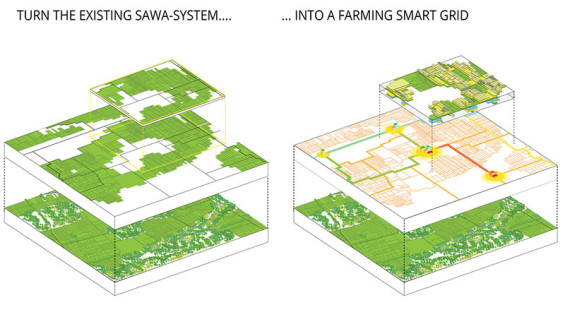
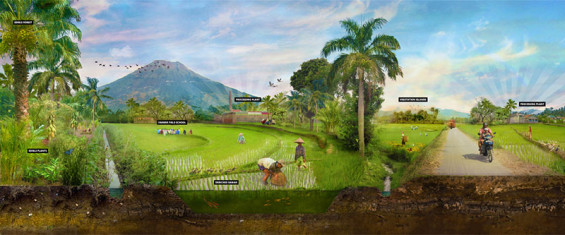
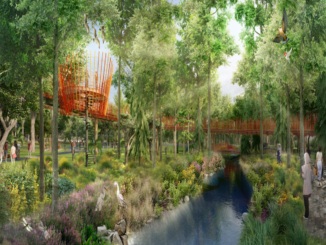
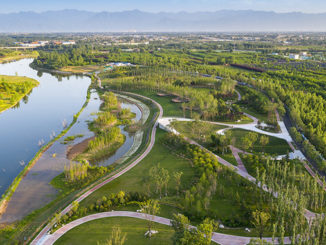
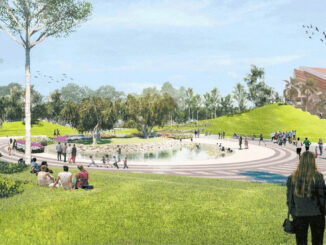
The first thing that comes to my mind with ‘Urban/Agriculture’ interface is sewage usage. One of the most important/beautiful/soil building resources we have is human poo mixed with sawdust and completely decomposed. After a minimum of 5 tests (all available to the public) as this is done via the Federal government at some of our countries city/county sewer facilities, the best mulch, compost I have ever found becomes available. Feeds our soil’s organisms and thus plants and birds/animals. In a very big way. Of course the one draw back is heavy metals so this shouldn’t be used for edible gardens. What isn’t used for mulch, I found was trucked out to our agricultural lands and pumped deep under the soil. As we know this does nothing for the plants growing above it and everything to our ground water sources.
I had a source in Seattle…’Sawdust Supply’. Have not been able to find one in Oregon. I won’t use bark or non-decomposed matter for mulch. I’ve got a client in Portland, London and one in Scotland presently. Is there a way to find sources for this human poo/sawdust/completely decomposed mulch? What is happening to our…poo…if it is not being used for mulch? Pumped into the ground? Into our groundwater sources? Some talk about using Urine as an ‘organic’ fertilizer but after finding that the bulk of our solids and urine are being pumped into the ground, out of the way for use by soil organisms and plants concerns me greatly.
Would someone out there know anything about this subject?